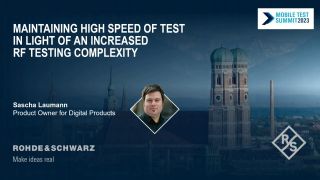Making open virtualized networks a reality
Testing and certification to ensure interoperability for O-RAN-based networks
Open Radio Access Network (O-RAN) is a new approach to designing and deploying mobile networks. Traditionally, mobile networks have been built using integrated, proprietary systems where hardware and software come from a single vendor. O-RAN, on the other hand, does not use one big, closed system from a single company. Instead, it promotes an open and interoperable architecture, allowing cellular equipment from different vendors to work together. O-RAN fosters a more competitive and dynamic ecosystem, reducing costs, accelerating innovation and ultimately improving the performance of mobile networks.
Key topics for O-RAN:
- O-RAN markets, opportunities and challenges
- O-RAN solutions for lab and field
- Testing next generation infrastructure equipment in production
- Critical design considerations for massive MIMO
- Base stations testing from FR1 to sub-THz
- Maintaining high test speed with increased RF testing complexity
Want to discuss your specific test cases with our experts? Contact us now.











